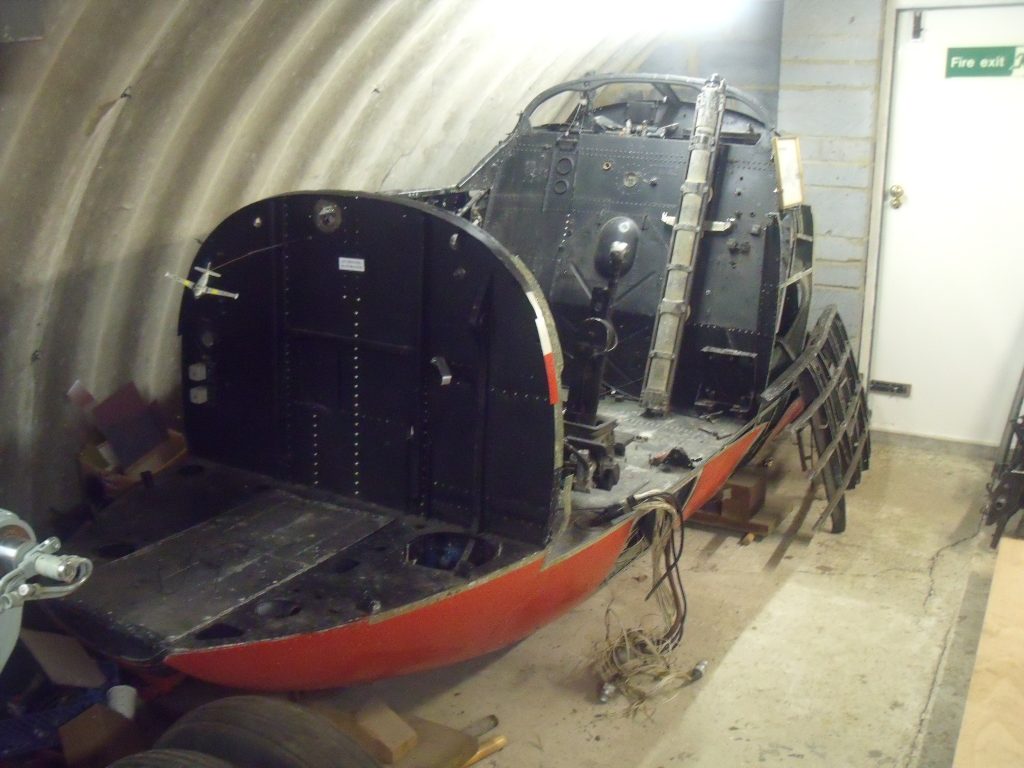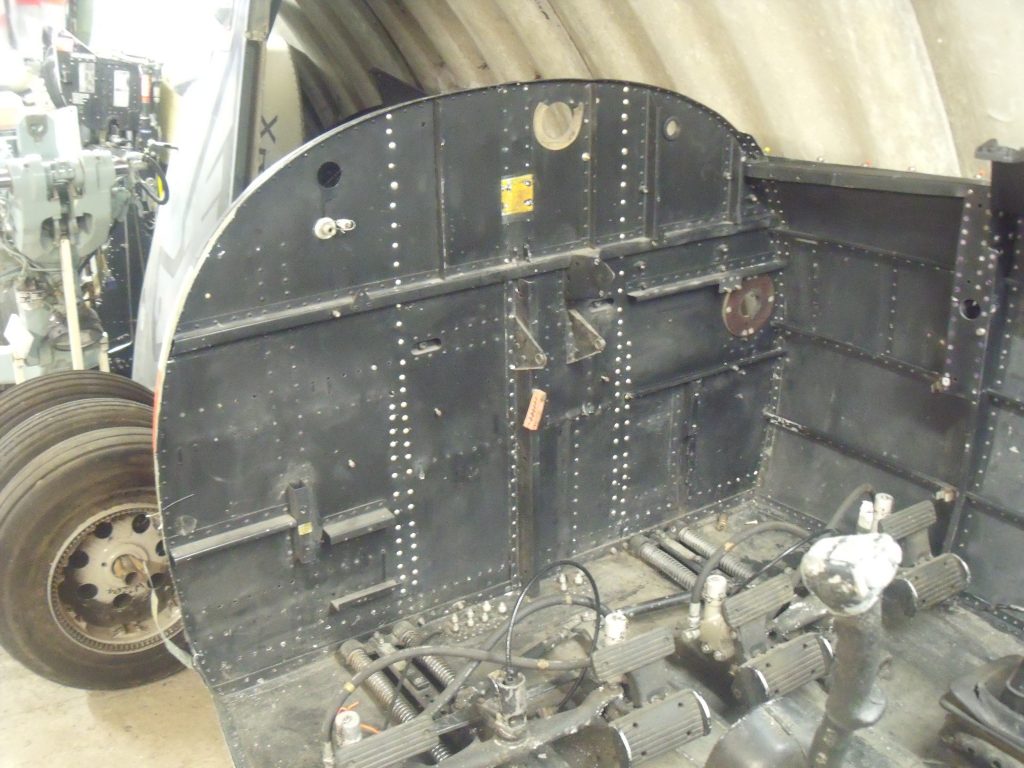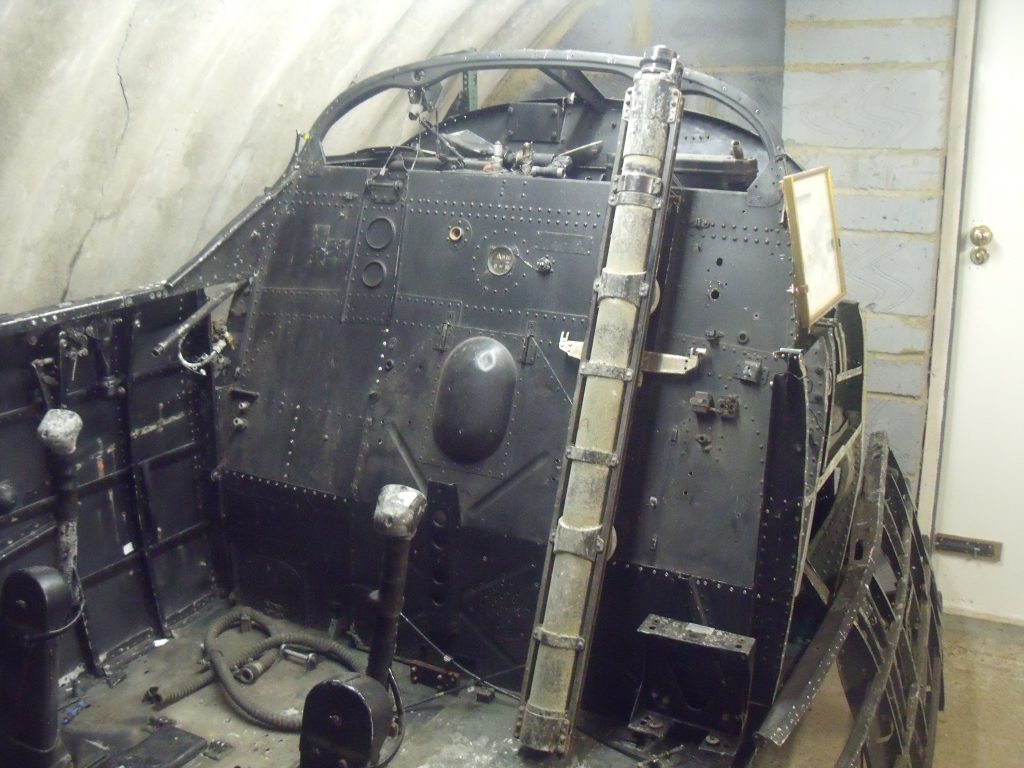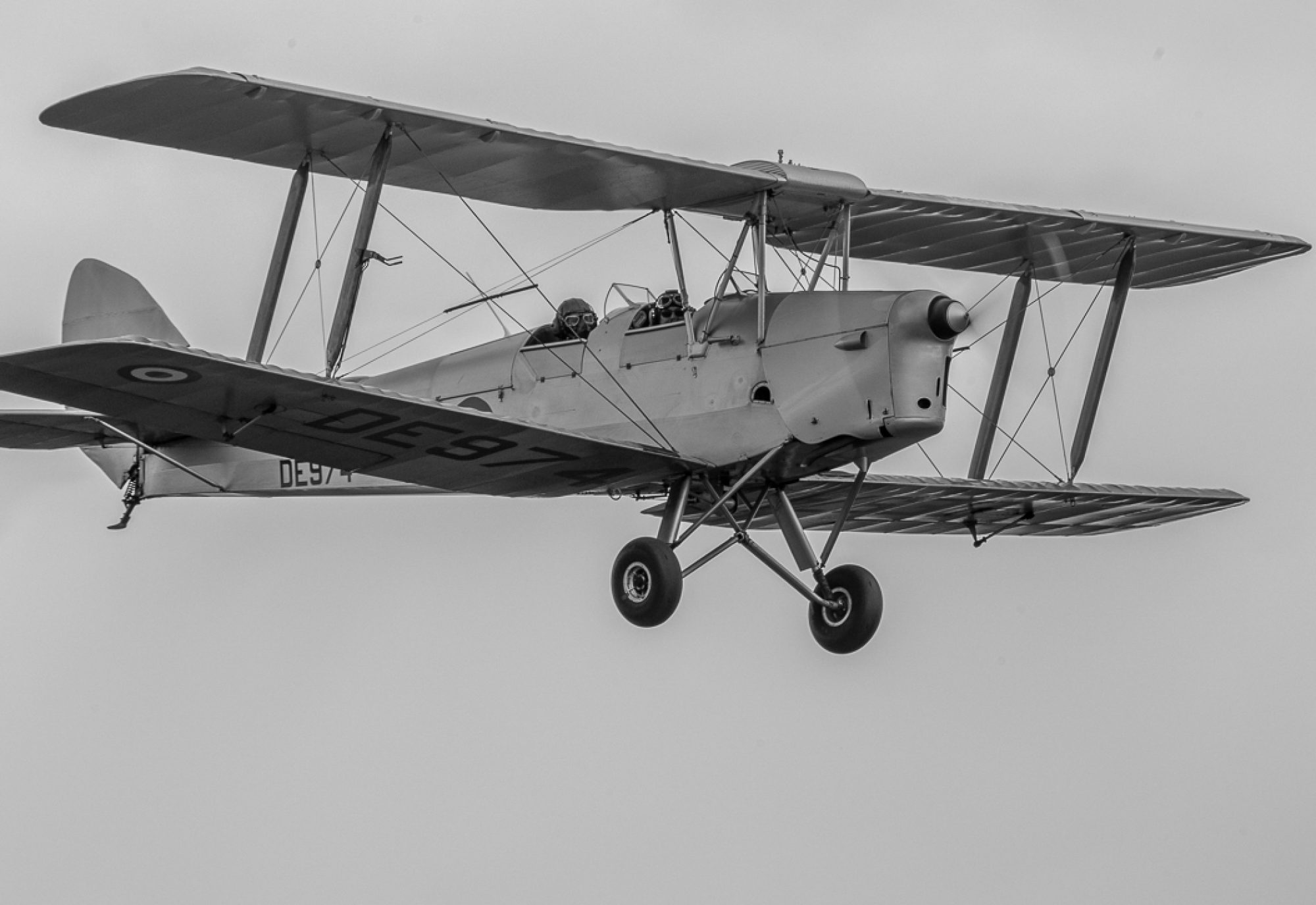
Jet Provost XR681 came to Robertsbridge as a kit of parts in 2002. The cockpit section had been used for instructional purposes by 1216 Squadron ATC based at Newhaven. In 2002 the unit decided to dispose of the cockpit section and they kindly donated it to the museum. An excited team from the museum visited the ATC unit to discuss removal and transportation requirements. It was during this visit that the team discovered that the cockpit section was situated in Portakabin adjoining the ATC main building and that the cockpit section would have to be taken out through a single door way in the Portakabin, then out through the main building. Apparently the Portakabin had been built around the cockpit section and we were not allowed to partially disassemble the building in order to remove it. So, how do you get a cockpit section through a single door way? Answer you dismantle it! Our resident aircraft engineer surveyed the cockpit section and a plan for disassembly was devised. The next problem was that we were only allowed to work on the cockpit section during cadet parades on a Wednesday evening for two hours. And so for the next few months a team of three met on a Wednesday evening to carefully dismantle the cockpit section. Firstly parts were removed from the cockpit such as the Meteor T7 seats fitted in place of the ejector seats, instrument panel, canopy and various controls and equipment. Next the team concentrated on drilling off the many rivets securing the skins to the cockpit section. Firstly the nose and rear sections of skin were drilled off and removed. With the skins removed work now started on removing the cockpit frames and stringers together with canopy rails as complete assemblies. Once removed work now started on the front and rear cockpit bulkheads. The front and rear bulkheads are the main building blocks for the cockpit section. The decision was taken not to cut the front bulkhead as this would make reassembly very difficult. Structural members were carefully removed from the bulkhead until it could be made flexible. The bulkhead would then be folded flat when the time came to remove the cockpit from the Portakabin. The rear bulkhead would not be so straight forward. The air intakes would originally have been located in this area but had been removed many years previously. The top section of the bulkhead was drilled off and removed and some of the side structure was easily drilled off and removed leaving a central pillar which formed part of the lower rear bulkhead. Unfortunately the only way to tackle this area was to devise a repair scheme then carefully cut the pillar off. After many evenings work accompanied by the Newhaven ATC marching band it was time to remove the cockpit from the Portakabin. On a Saturday morning a team assembled at Newhaven with appropriate transport. The single door was removed from the building together with door jambs. The section was then turned on its side and carefully manoeuvred through the door. Once in the main hall it was a relatively easy task to carry it out to the waiting transport. Due to lack of space at the time the cockpit section entered a long period of storage pending reassembly.
Restoration commences
Following conversion of the storage building into a museum building, an area was set aside to enable restoration of the cockpit section when the museum is not open. With the lower fuselage sited work commenced on cleaning, removing rivet tails and preparing parts for reassembly. Rather than completely dismantle, repaint and reassemble everything the decision was been taken to clean, repair where necessary and reassemble, thus preserving the original internal paint application and colour.Rrivet heads and tails will be painted black by hand. When complete the exterior will be repainted in its red and white Flying Training School (FTS) scheme.

The first section to be tackled was the forward bulkhead. This was a relatively simple task as the bulkhead had been folded down after removal of its strengthening angles and channels. With everything secured using skin pins the bulkhead was riveted up.Next attention turned to the more complicated rear bulkhead. Firstly the left and right steel air intake structure was prepared and skin pinned into place. This enabled the rear bulkhead to be located and pinned into position to enable repair splice plates to be fabricated. The bulkhead was then removed and the steel air intake structure riveted into place. Now the rear bulkhead complete with upper decking and window frames was positioned and pinned into place, the repair splice plates fitted and riveted into place.
Many thanks to Dave George, Philip Baldock, Trevor Woodgate and Peter Whiting

BAC JET PROVOST T4 XR681 SERVICE RECORD
04-07-1963 – First flight
19-07-1953 – Delivered to RAF College Cranwell and coded ‘94’
12-05-1971 – Delivered to 6 FTS Finningley and coded ‘Q’
30-07-1971 – Delivered to Central Air Traffic Control School, Shawbury
05-08-1971 – Delivered to 27 MU Shawbury
06-08-1971 – Declared non-effective
01-10-1971 – Struck off charge as CAT 5 (C) and broken up for spares. The fuselage was scrapped.
21-09-1971 – Nose section was transported to the RAF Exhibition Flight, Bicester and was re numbered 8588M.
03-09-1985 – Delivered to 1349 Sqn. ATC Woking but kept at Woking.
1993 – Delivered to 1216 Sqn. ATC Newhaven
2002 – Donated to Robertsbridge Aviation Society and moved to Robertsbridge.

